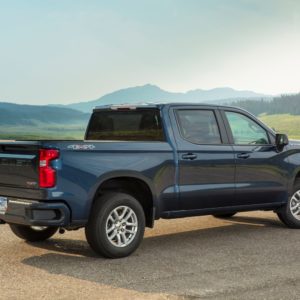When Ford introduced the Mustang on April 17, 1964, the company not only created a new car that gave Lee Iacocca the status of legend in the automotive industry, it also created a new segment, the pony car. Chevrolet didn’t have a similar car, and Ford held an enormous market share as Chevy, Pontiac and Plymouth fought to catch up.
The first Camaro, in 1967, offered either a V6 or V8 engine, convertible or sport coupe styling. The car was a hit, naturally, and more than 220,000 were sold.
By the time the 1969 models were introduced, Camaro had moved quickly up the learning curve and had style and power. Among the new power options was a Z/28 package. Known officially as the RPO Z28 Camaro Special Performance Package, it included a special 302 cubic inch V8 with an estimated horsepower rating of 350 and an official rating of 290, dual exhausts, special front and rear suspension, heavy-duty radiator and temperature-controlled fan, quick ratio steering, and 15 x 7-inch Rally wheels. A four-speed manual transmission and power disc brakes were additional mandatory options, while a Posi-Traction rear axle was recommended. Top speed was estimated at 120 mph.

Z/28s wore Goodyear wide tread (for the time) E70-15 tires that were on seven-inch rims.
The Z/28 was not available as a convertible, because Chevrolet only needed to homologate the coupe for Trans Am racing.
There was also a rare ZL-1 Camaro with a 427 cubic inch V8 that had an aluminum block and three two-barrel carburetors. Only 69 of these 425 horsepower hot rods were built, ostensibly as factory experimental racers.
One of them went to Roger Penske for Mark Donohue to use in the SCCA’s Trans Am series. Donohue won the championship that year, the second of his two titles with Camaro.
This car is equipped with a Traco-modified 305 cubic inch V8 engine, similar to the ones prepared for the Trans Am racers. Horsepower is estimated to be in excess of 500. It is also equipped with a five-speed manual transmission that was not offered on the factory cars.
 The base V8 engine for the Camaro was a 327 cubic inch small block rated at 210 brake horsepower. A 230 cubic inch inline six, rated at 140 hp, was also available, but the big news was in the more powerful versions.
The base V8 engine for the Camaro was a 327 cubic inch small block rated at 210 brake horsepower. A 230 cubic inch inline six, rated at 140 hp, was also available, but the big news was in the more powerful versions.
A new body for 1969 gave Camaros a longer and lower appearance. The formerly smooth-sided body was now more highly sculptured, with a side feature line tracing the forward edge of the front wheel housing and running straight from the opening to the rear of the car. Simulated vertical air slots were positioned ahead of the rear wheels. Chevrolet added an egg-crate grille in 1969 that continued with the Camaro for several years. This car has an optional small rear spoiler and fog lights.
Other modifications from standard are a custom steering wheel, seats and instrumentation on the center console.
Still offered in coupe or convertible forms, Camaro sold a total of more than 230,000 cars during the 1969 model year.
Camaro was built on a 108-inch wheelbase chassis and was 186 inches in overall length.
In 1969, a Camaro coupe could be bought for $2,727. The RPO Z28 package was priced at $506.60. A 1969 Z/28 in good condition today can fetch as much as $27,000, while the rare ZL-1 version can cost you as much as $78,000, according to the Old Cars Price Guide.
This example is owned by Italian car collector Nicola Bulgari, and is garaged in Italy. It is one of only a few Chevrolets in his collection, which comprises primarily Buicks.

- MODEL: 1969 Chevrolet Camaro Z/28
- ENGINE: 5.0-liter (302 c.i.) V8
- HORSEPOWER/TORQUE: 290 hp @ 5,800 rpm/290 lb-ft @ 4,200 rpm
- TRANSMISSION: 5-speed manual
- WHEELBASE: 108 in.
- LENGTH x WIDTH x HEIGHT: 186 x 72.5 x 51.4 in.
- WEIGHT: 3,525 lbs.
- STICKER PRICE: $3,233 (for base Z/28)
Any information provided on this Website is for informational purposes only and is not intended to replace consultation with a professional mechanic. The accuracy and timeliness of the information may change from the time of publication.














